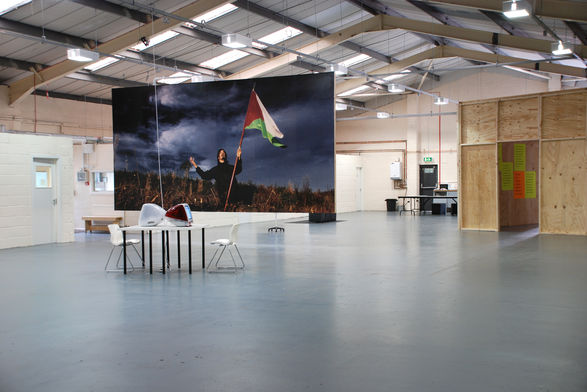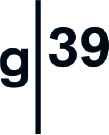About g39

g39`s premises at Oxford Lane, Cardiff
G39 is an artist-run organisation and creative community space in Cardiff, the capital city of Wales. The Objects of g39 are to advance and promote contemporary visual arts for the benefit of the public in particular but not exclusively by providing exhibition space for Welsh and other contemporary visual artists, and by providing training and other similar resources to artists and to the public. G39 is staffed by a small team of part-time staff and volunteers and managed by a board of member trustees. The organisation is registered with Companies House as a non-profit distributing company limited by guarantee. The registered office is g39 Oxford St, Cardiff CF24 3DT, and the registered company number is 3938363. G39 became a registered charity in 2019, its charity number is 1181492.
To achieve g39’s purposes we organise and present a wide-ranging public programme of activities, from major exhibitions, talks and formal symposia to experimental projects and social events.
We also run an informal membership scheme for emerging and mid-career artists who live and work in Wales. Through Warp (Wales Artist Resource Programme) we offer artists support and advice, training and information and facilitate networking between individual artists and groups. G39 does not represent artists commercially; instead we encourage their self-management and professionalism.
G39 connects regularly with 1,300 artists, 700 of whom are living and working in Wales. Our on-site activities engage between 4,000 and 5,000 people annually; our off-site activity and contributions to festival programmes account for substantially more public encounters.
G39 is currently one of only two artist-run organisation with revenue status from the Arts Council of Wales. Around 57-60% of the organisation’s costs are met through funds via the Arts Council of Wales. The remainder is raised via trust funds, partner organisations, earned income, cash donations, and crucially the donated time of committed volunteers.
A brief(ish) history
g39 started in 1997 as an idea; an artist-run space that could platform new work by artists in Wales and connect those artists. By July 1998 g39 opened on a small budget but with bigger plans. Incorporated in 2000 as g39 – g for gallery & galeri, 39 for our address in Cardiff’s city centre.
g39 built networks, alliances and groupings of artists - to connect them to a committed and curious audience and grow critical conversations. It is part of a larger network of artist-run spaces that pioneer alternative and innovative structures to those of larger institutions.
g39 became the first artist-run space taken on as a portfolio client of the Arts Council of Wales in 2004. In 2008, it developed an open-access resource space and training programme for emerging and mid-career artists in Wales. By 2011, Cardiff city centre was changing so g39 moved to an open plan warehouse to the East of the city. In 2019 an application to become a registered charity was accepted.
g39’s support contributes to the career development of contemporary visual artists, who now have significant reputations. Supported artists have gone on to represent Wales internationally, specifically representing Wales in Venice. g39 also works in collaboration with galleries abroad to host co-curated exhibitions and to show Welsh artists.
g39 is part gallery, part community and part resource. A welcoming space to experience contemporary art, it has become a hub and a connector between people, artists and contemporary art. It is an open plan exhibition space, a cinema, a library and a social space.
Artists at all career stages are at the heart of g39’s activities. From residencies to training and mentoring, informal gatherings, or realising the most ambitious of exhibitions – its aim is to encourage and enable every person whose ambition it is to pursue a visual art practice.
g39 provides a critical framework for artists within and beyond Wales, who in turn contribute to generating a diverse, informed, and engaged audience. It is an advocate of good practice, building a blueprint for artist-run activity in conversation with umbrella bodies and arts organisations, g39’s focus is support and information sharing.












